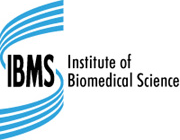Careers in biomedical science
Offering a variety of exciting career opportunities in specialist laboratory work, expert and consultant roles, research, education and management
Many biomedical scientists work for the NHS or in the private sector. Their modern laboratories are the hi-tech hubs of hospitals and at the cutting edge of healthcare.
If working in a general hospital laboratory isn’t for you, there are lots of other avenues to explore:
|
|
Alternatively, you may decide to follow a career in research, forensic science or one of the other disciplines allied to the biomedical sciences.
World-wide opportunities
If travelling is your thing, you can use your training and skills in healthcare posts and projects around the world. Biomedical scientists are highly sought after for international healthcare projects in hospitals, schools and universities.
You may want to become involved in voluntary work in developing countries on behalf of international bodies such as the World Health Organization or the Voluntary Service Overseas.
For a varied and physically demanding career, the armed forces offer biomedical scientists the chance to use a variety of skills and apply them to different scenarios and settings around the world - from setting up field hospitals to help with an Ebola outbreak in Sierra Leone to working on a battleship off the coast of Bahrain, you’ll support medical teams across the armed forces with an essential clinical laboratory service.
Like other professions, you can get involved in professional activities where you can develop skills in media, politics, organising events and discussion groups, networking and professional representation.
